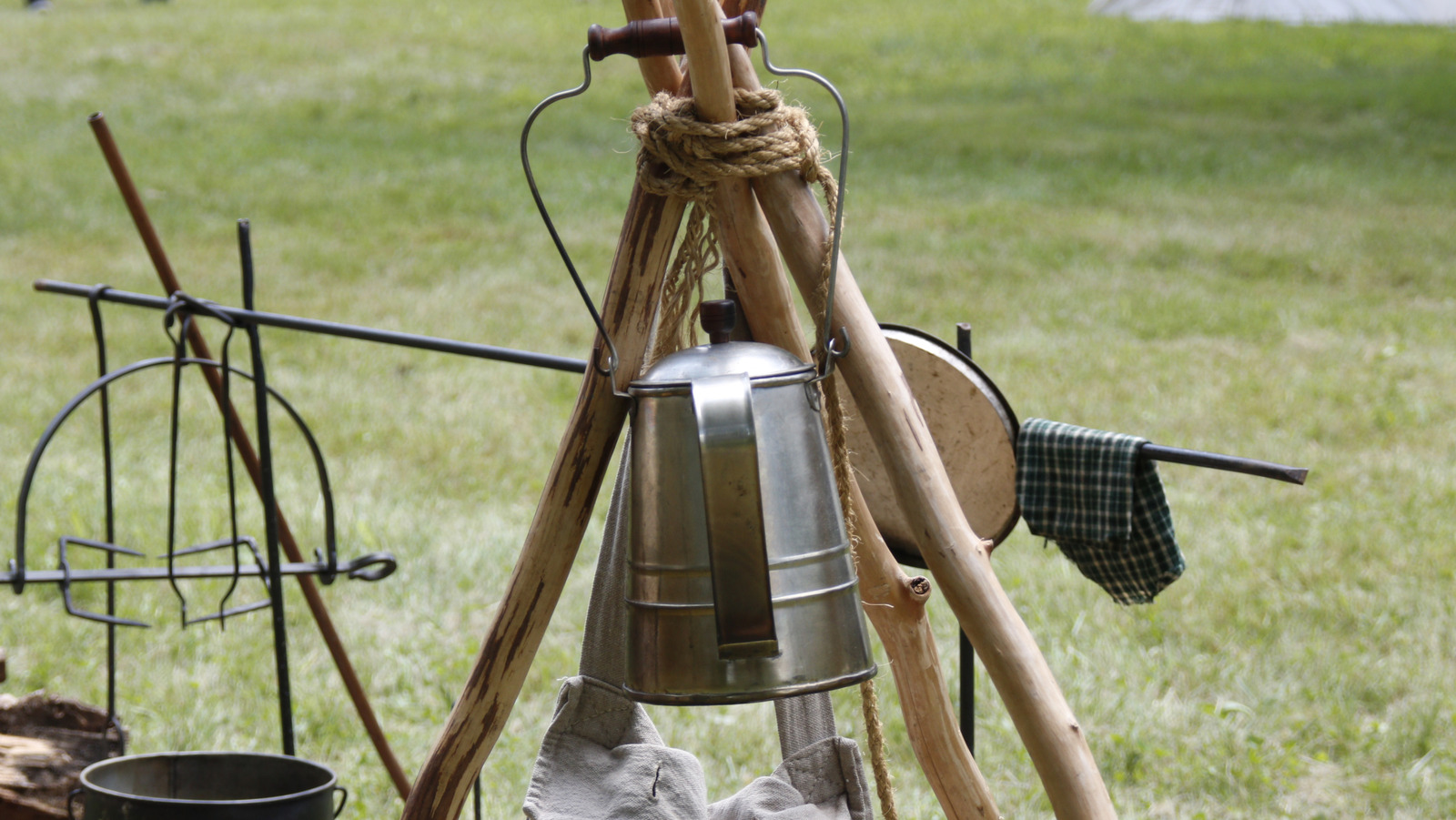
""An army marches on its stomach," goes the old saying. Soldiers of all ages need to eat to be at their best on the battlefield, and at each point in history, there's one tool, recipe, or technology that soldiers rely on for their chow. For troopers participating in the American Revolutionary War, that crucial tool was the humble cook pot."
""Also known as a camp kettle or cook kettle, this tool - quite similar to the stock pot that we've got today - is the single cooking tool that both British and Continental Army troopers are issued as part of their mess kit. Made from lightweight tin (as opposed to heavy iron), this pot can be handily carried on a soldier's back for miles. Each cook kettle was sized to feed six men, so one pot is often issued to a six-man formation in the army.""
""When it came time to chow, the cook pot would go on top of a campfire built from whatever fuel they could scavenge. Then, they'd take out their day's ration and see exactly what they had. According to the American Battlefield Trust, each soldier received daily one pound of beef or salt fish (or 3/4 pound of pork if supply didn't allow), a pound of bread or raw flour, and a quart of spruce beer for beverage.""
Cook kettles, also called camp kettles, were the primary portable cooking vessel for British and Continental soldiers during the American Revolutionary War. Constructed from lightweight tin rather than heavy iron, the pots could be carried on a soldier's back and were typically sized to feed six men, often allotted to a six-man formation. General Washington's personal mess kit included a nest of camp kettles, underscoring their importance. Soldiers placed the kettles over makeshift campfires, pooled daily rations, and used the pots to prepare communal meals from limited supplies including meat, bread or flour, and spruce beer.
Read at Tasting Table
Unable to calculate read time
Collection
[
|
...
]